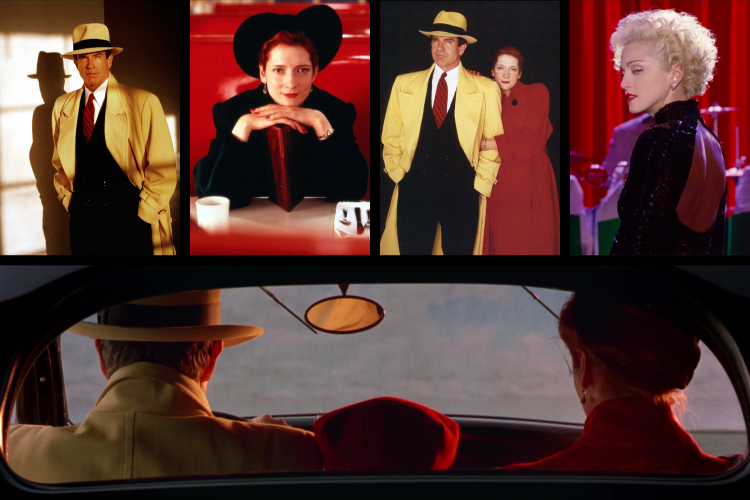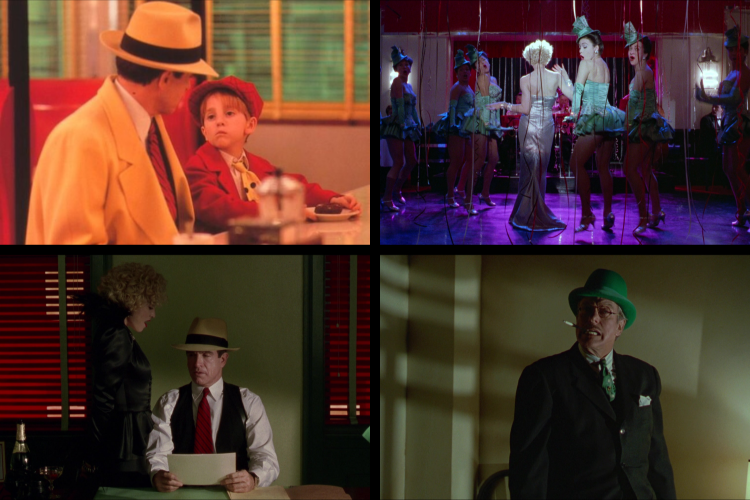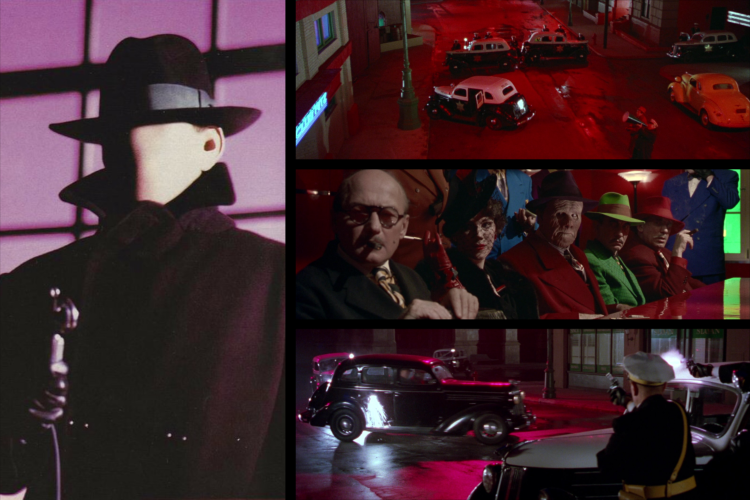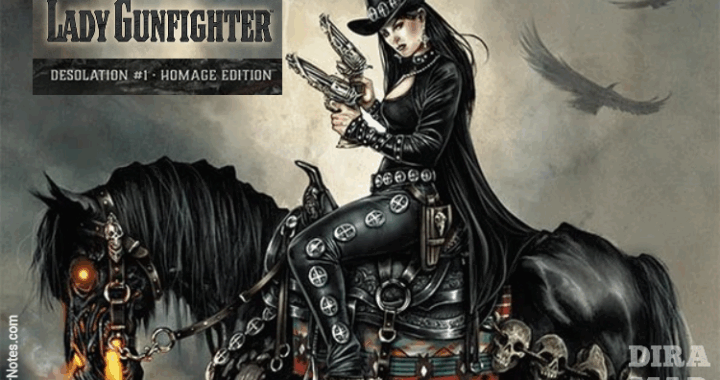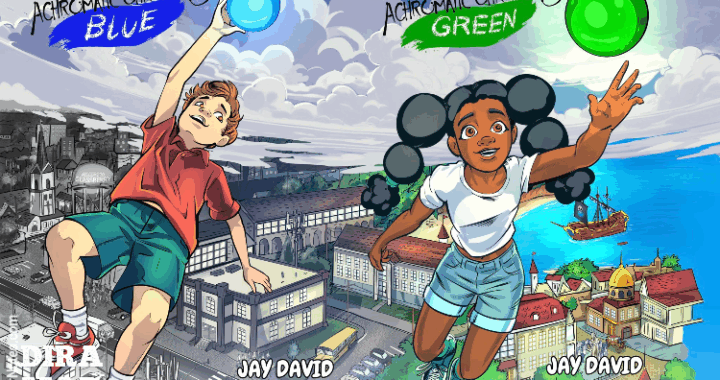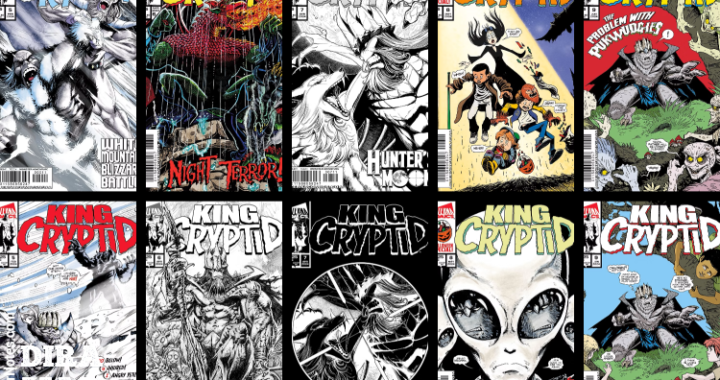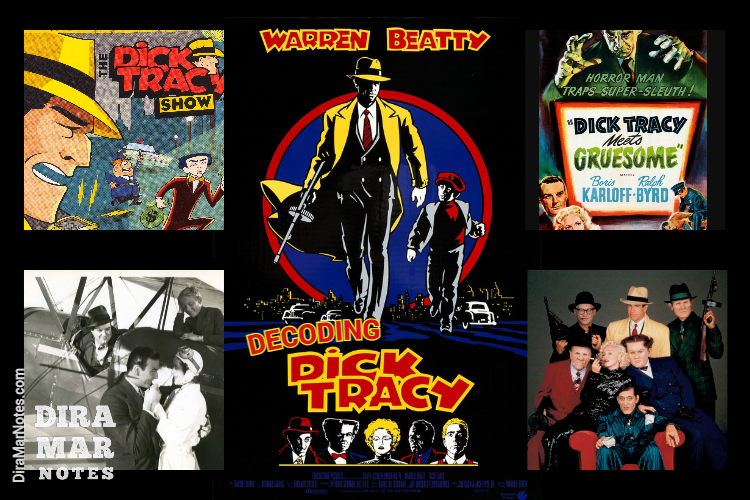
DECODING DICK TRACY
In the world of movies, some films aren’t just entertaining; they shape the very essence of filmmaking itself. “Dick Tracy,” which debuted in 1990, is one of those remarkable films.
“Dick Tracy” (1990) was based on the popular comic strip of the same name created by Chester Gould. This neo-noir crime thriller musical comedy directed by Warren Beatty left a lasting impression on audiences and critics alike. It delved into the dark and gritty world of detective comics, bringing the iconic character to life with vibrant colors and a richly imagined universe.
The comic strip, which first appeared in newspapers on October 4, 1931, followed the adventures of the titular detective, Dick Tracy, as he fought crime in the fictional city of “Dick Tracyville.” The character of Dick Tracy became an iconic figure in American pop culture, known for his distinctive appearance, including his square-jawed profile and trademark yellow trench coat.
The 1990s film made him popular internationally. That’s how I first learned about Dick Tracy. The Dick Tracy IP has more than just the 1990s film, it has an extensive catalog including film serials, a tv show, and a cartoon show, all based on the comic strip.
DICK TRACY 1990
The 1990 film adaptation brought the colorful characters and stylized world of the comic strip to life on the big screen, drawing inspiration from Gould’s original artwork and storylines.
Set in a stylized version of the 1930s, at an illegal card game, a young street urchin, played by Charlie Korsmo, witnesses a brutal attack on a group of mobsters named Shoulders, Stooge, the Rodent, the Brow, and Little Face. The perpetrators, Flattop (William Forsythe) and Itchy (Ed O’Ross) are two of the henchmen working for the notorious crime boss Alphonse “Big Boy” Caprice, portrayed by Al Pacino.
Big Boy’s criminal organization is aggressively expanding its control over small businesses in the city. Detective Dick Tracy, played by Warren Beatty, apprehends the urchin, who goes by the name “Kid,” for petty theft. After rescuing Kid from a dangerous situation, Tracy temporarily takes him under his wing with the help of his girlfriend, Tess Truehart, played by Glenne Headly.
As he battles against the city’s underworld, led by the flamboyant gangster Big Boy Caprice, Tracy encounters various eccentric characters, including the sultry nightclub singer Breathless Mahoney, played by Madonna, and the enigmatic crime boss Mumbles, portrayed by Dustin Hoffman. With its striking visual aesthetic, innovative prosthetic makeup, and homage to classic film noir, “Dick Tracy” is a captivating blend of action, suspense, and style, earning critical acclaim and multiple Academy Award nominations.
DICK TRACY AND FILM NOIR
“Dick Tracy” (1990) stands out as a notable homage to the film noir genre, seamlessly blending elements of classic detective cinema with a contemporary twist. Director Warren Beatty draws inspiration from iconic films such as “The Maltese Falcon” to infuse “Dick Tracy” with the quintessential essence of film noir. Through chiaroscuro lighting, morally ambiguous characters, and hard-boiled narrative style, Beatty crafts a visually striking and emotionally resonant neo-noir experience.
Central to the film’s noir aesthetic is its portrayal of a gritty and morally complex underworld, where shades of gray blur the lines between right and wrong. Beatty’s interpretation of the iconic detective character embraces the stoic resolve and world-weary demeanor typical of classic noir protagonists, while also injecting a sense of modernity and relevance. Through its meticulous attention to detail and atmospheric cinematography, “Dick Tracy” transports audiences into a world of intrigue, danger, and moral ambiguity, reminiscent of the classic film noirs of yesteryear.
THE CHARACTERS
The film showcased some very particular characters:
Dick Tracy (Warren Beatty)
The titular detective is known for his steadfast commitment to justice and his iconic yellow trench coat.
Breathless Mahoney (Madonna)
A seductive nightclub singer and femme fatale who becomes romantically entangled with Dick Tracy.
Big Boy Caprice (Al Pacino)
The flamboyant and ruthless crime boss who seeks to control the city’s underworld.
Mumbles (Dustin Hoffman)
A quirky and unintelligible gangster who serves as one of Big Boy’s henchmen.
Tess Trueheart (Glenne Headly)
Dick Tracy’s loyal girlfriend and confidante, who supports him in his quest for justice.
Kid (Charlie Korsmo)
A young orphan who looks up to Dick Tracy as a father figure and becomes his sidekick in the fight against crime.
Flattop (William Forsythe)
A brutish and disfigured gangster with a flat-top haircut, known for his violent tendencies.
Pat Patton (James Keane)
Dick Tracy’s loyal partner on the police force, is known for his unwavering support and dedication.
Lips Manlis (Paul Sorvino)
A suave and sophisticated mobster who operates a nightclub and casino in the city.
88 Keys (Mandy Patinkin)
A talented pianist and musician who serves as Breathless Mahoney’s accompanist and confidant.
VISUALS, COSTUMES AND MUSIC
“Dick Tracy” (1990) is renowned for its bold visuals and vibrant aesthetics, transporting audiences into a stylized version of the 1930s. The film’s bold color palette, reminiscent of the original comic strip, creates a visually striking world that feels both nostalgic and contemporary. The costumes are equally extravagant, with characters adorned in exaggerated costumes and innovative make-up (at the time) that reflect their larger-than-life personalities.
From Dick Tracy’s iconic yellow trench coat to the flamboyant attire of gangster Big Boy Caprice, each costume adds to the film’s visual spectacle and helps to immerse viewers in its fantastical universe. The meticulous attention to detail in both the set design and costumes contributes to the film’s unique charm, making “Dick Tracy” a feast for the eyes from start to finish. While it may have garnered attention for its cartoony interpretation of the bad guys, not all the attention was positive. Some people were not fans of this interpretation.
The music made the film very distinctive and having the singer Madonna, who was very popular at the time, as part of the cast was probably one of the selling points of the movie. The visuals, costumes, and music helped to film to lean more toward the musical comedy angle.
Up until that point, the Dick Tracy stories on screen were portrayed in a serious matter, resembling real live issues and challenges. It’s no surprise that some fans of the previous iterations didn’t like the exaggerated customers, over-the-top coloring, and the music. People don’t like change in general, especially changes with significant impact.
DICK TRACY’S THEMES
Dick Tracy explores known themes with a blend of action, humor, and stylized visuals, creating a rich and engaging narrative that resonates with audiences:
Justice and Morality
The film delves into the moral complexities of justice as Dick Tracy navigates the treacherous world of crime and corruption. His unwavering dedication to upholding the law and bringing criminals to justice is tested by the morally ambiguous actions he must take to achieve his goals.
Good vs. Evil
Central to the story is the timeless struggle between good and evil, as Dick Tracy faces off against a colorful cast of villains, each representing different facets of wickedness. The film highlights the importance of standing up against evil forces and fighting for what is right, despite overwhelming odds.
Love and Loyalty
Dick Tracy’s relationship with Tess Trueheart, his steadfast love interest, underscores themes of love and loyalty. Despite the dangers and challenges they face, their bond remains unwavering, serving as a beacon of hope amidst the chaos of Tracy’s dangerous profession.
Identity and Self-Perception
The characters in “Dick Tracy” grapple with issues of identity and self-perception, often adopting larger-than-life personas to mask their insecurities or fulfill their desires. Whether it’s the flamboyant gangster Big Boy Caprice or the enigmatic femme fatale Breathless Mahoney, each character struggles with their sense of identity and purpose in the world.
DICK TRACY IN THE 1930s
Before the film adaptation in 1990, Dick Tracy was already on the screen many times including a 15-chapter Republic Pictures movie serial released in 1937. I know about Republic Pictures from watching Zorro’s Black Whip serial but for those who don’t know I’ll explain what a movie serial is in the following paragraph.
MOVIE SERIAL
A movie serial is a motion picture form that was popular during the first half of the 20th century in the U.S. The movie serial consists of a series of short subjects exhibited in consecutive order at one theater, generally advancing weekly, until the series is completed.
Each chapter was screened at a movie theater for one week and ended with a cliffhanger, in which characters found themselves in perilous situations with little apparent chance of escape. Viewers had to return each week to see the cliffhangers resolved and to follow the continuing story.
THE DICK TRACY SERIAL
Adapted from the popular comic strip created by Chester Gould, the Dick Tracy serial was written by George Morgan, Barry Shipman, and Winston Miller. The serial was directed by Alan James & Ray Taylor and produced by Nate Levine.
The film serial starred Ralph Byrd as Dick Tracy, Kay Hughes as Gwen Andrews, Smiley Burnette as Mike McGurk, Lee Van Atta as Junior, John Picorri as Dr. Moloch, Richard Beach as Gordon Tracy (pre-operation), Carleton Young as Gordon Tracy (post-operation), Fred Hamilton as Steve Lockwood and Francis X. Bushman as Clive Anderson. Following the 1937 serial, Republic Pictures produced 3 more film serials with the same lead: Dick Tracy Returns (1938), Dick Tracy’s G-Men (1939), and Dick Tracy vs. Crime, Inc. (1941)
The serials followed the exploits of the detective as he tackled crime and corruption in the bustling metropolis of Dick Tracyville. Each was presented in the serialized format over 15 episodes of approximately 17 minutes each, offering viewers a thrilling glimpse into Tracy’s world, filled with nefarious villains, daring rescues, and clever detective work.
The serials brought the beloved character across America and solidified his status as a cultural icon. The Dick Tracy serials of the 1930s were a groundbreaking production that showcased the burgeoning medium’s potential for storytelling and entertainment.
DICK TRACY IN THE 1940s
After the Republic Pictures serials, we have RKO Radio Pictures producing new serials of Dick Tracy full-feature noir films in 1945 based on Chester Gould’s work.
The first feature is Dick Tracy or Dick Tracy, Detective starring Morgan Conway as the lead was followed by Dick Tracy vs. Cueball in 1946 with Morgan Conway reprising his role. The next two films were Dick Tracy’s Dilemma and Dick Tracy Meets Gruesome both released in 1947 starring Ralph Byrd as lead.
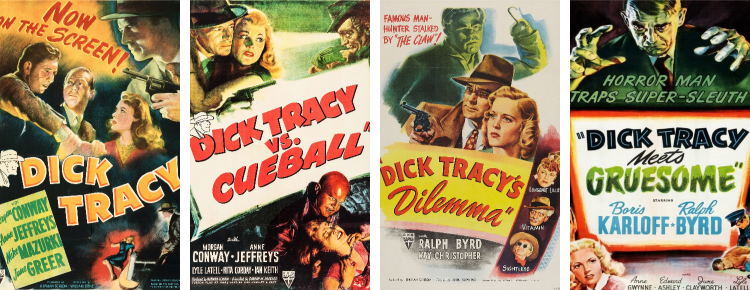
DICK TRACY IN THE 1950s
Dick Tracy television program debuts in 1950, starring Ralph Byrd as Dick Tracy. The show aired for 2 seasons with 48 episodes. Intrepid detective Dick Tracy tangles with a bizarre rogue’s gallery of villains.
But as always, our stoic officer of the law, virtuous to a fault, proves himself up to the task of putting the criminals behind bars. This show even gives a lot more depth and back story to the villains showcased in the 1990’s Dick Tracy film.
DICK TRACY IN THE 1960s
The Dick Tracy Show, an animated cartoon series aired from 1961 to 1962 with 130 episodes, produced by United Productions of America (UPA). In the show, policeman Dick Tracy employed a series of cartoony subordinate flatfoots to fight crime each week, contacting them on his two-way wristwatch radio. Tracy himself hardly appeared on the show at all.
The Dick Tracy Show was pulled from syndication in the mid-1970s and mid-1980s. The series was not seen for years afterward because of what some perceived as racist undertones and the use of ethnic stereotypes and accents.
A REALIZATION
It’s fascinating to see the contrast of what people thought about Dick Tracy in the 90s versus now. After learning more about the film process and gaining an appreciation for those who make films, it’s disturbing to see how easily people can dismiss the work of others.
The decline in the quality of films over the last decade and the social media era has made it easier for people to trash films, many times without even watching them. It’s not just recent films but older films as well. What is the point of watching films then?
It seems that we as people have lost the ability to appreciate things in life and are constantly looking for perfection even in entertainment. Social media platforms like Instagram have tried to embed a standard for perfection that has transcended from images to behaviors. It’s not a simple photo touchup, now it’s full-on plastic surgery accompanied by a particular lifestyle.
However, in reality, nothing is perfect. Nothing remains perfect. What seems imperfect may have its beauty and uniqueness that may get recognized over time or get lost in the pursuit of finding perfection. It’s ok to like a film because you simply had a good time, it made you feel something, or it made you think about something.
You don’t have to force yourself to follow the herd. It’s ok to be the only one in your circle to like something for a specific reason. Look at this blog for example. I chose not to write about what’s trending but about what I’m interested in. I was told to look for something else to watch since many IPs we like, such as Star Trek, M.I.B., Terminator, etc, were on a decline. But alternatives are rarely talked about or properly highlighted because they are not “trendy”.
So I learned to look for alternative entertainment by myself. People usually say they don’t have time but I learned it’s a matter of making time by reviewing my consumer habits. Once you realize how much time is wasted, it’s easier to find time to explore alternative entertainment. After all, being a thinker is better than being a follower.
FINAL THOUGHTS
Dick Tracy (1990) is a testament to cinema’s ability to captivate and inspire. They got everyone’s attention with their costumes and makeup. While some may hate the comic’s exaggerated style and storytelling, it’s that style that inspired filmmakers to make more interesting and entertaining films such as The Rocketeer (1991), Sky Captain and the World of Tomorrow (2004), Sin City (2005), and The Spirit (2008).
With its captivating visuals, interesting characters, and enduring themes, it continues to entertain audiences and inspire filmmakers to this day. When it comes to film noir Dick Tracy (1990) is one of the films I first think about. I recently watched it in a movie marathon that included Who Framed Roger Rabbit? (1988), and Trouble is My Business (2018).
It’s always interesting to learn and discover more about an IP other than just looking at the surface. Even though many years have passed the Dick Tracy versions from the 1930s, 1940s, 1950s, and 1960s remain a discovery for those who have yet to encounter or experience them. Watching vintage film noir and understanding more of its peculiar style is interesting. The challenge is finding where to watch them on streaming platforms or where to find them on physical media.
My Rating: 6.5/10
It’s never too late to learn more about the past, appreciate what was done well, and learn from the mistakes that were made.
References
The Chester Gould Dick Tracy Museum. The Dick Tracy Timeline – Last accessed May 5, 2024
The Closing Logo Group. Republic Pictures – Last accessed April 30, 2024
Wikimapia. Republic Studios backlot (historic site) – Last accessed April 30, 2024
Serialssquadron. Republic Serials – Last accessed April 30, 2024
All images and videos in this publication belong to the original creators and are used as references under fair use.

